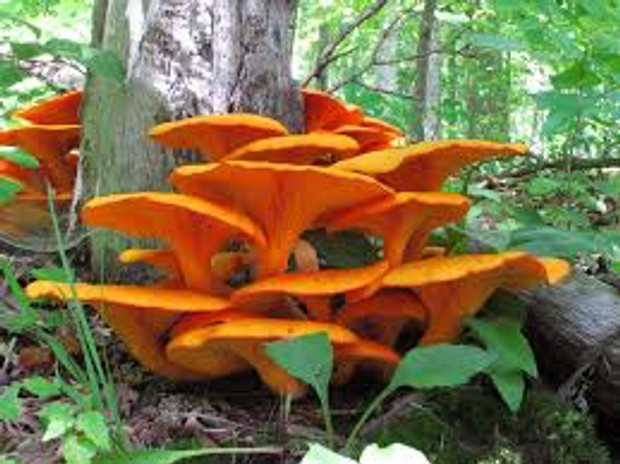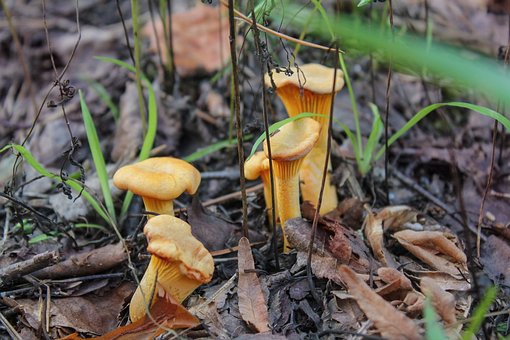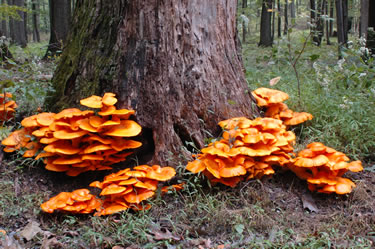I only pick the chanterelles.




Those are beautiful for a mushroom.I only pick the chanterelles.

Yeah, I'm lucky I survived my teen years! On the other hand, I used to drink tea with cow dung in it, now I just spread it around the vegetables I eat. I guess I'm never gonna learn.They were popular here when I was a kid. They made tea from them that was supposed to be pretty potent. I never tried it, mainly because it grew from cow piles....
Yeah, I'm lucky I survived my teen years! On the other hand, I used to drink tea with cow dung in it, now I just spread it around the vegetables I eat. I guess I'm never gonna learn.
Brent, I have done those a couple of times. While it was neat, and the mushrooms were tasty, I didn't really think it was worth the money and effort.I've seen kits for growing edible mushrooms. At least I wouldn't poison myself that way.


As an ex-paramedic and passing good at identifying wild edible (and medicinal) plants, I have a lot to say about this.
In a survival situation, stay away from all wild mushrooms unless you've taken several accredited college courses.
Some mushrooms are perfectly edible in one environment, and deadly poisonous in another because of the different soil chemistry.
This may seem odd, but there are mushrooms that are poisonous to white people and perfectly fine for african-americans. If you consider tetracycline, for example, it increases sensitivity to sunlight. White people exposed to sunlight after eating a specific mushroom will become deathly ill when the sunlight activates the toxins...but black people (and, presumably, some people from India) will have no problems because the melanin in their skin will block enough sunlight to prevent this from happening.
For any poisoning, activated charcoal can be made by burning white bread and grinding up the black ash.
As was mentioned earlier, by the time symptoms of mushroom poisoning show...it's already too late.
The toxins act by (among other things) destroying the liver and kidneys. The deadliest mushrooms belong to the Amanita family...namely Amanita phalloides, amanita virosa, Amanita muscaria, and so on.
Incidentally, lethal mushrooms can serve a very important function: cut up an Amanita muscaria (reddish, with white scale spots, well-defined gills with a notch, a ring halfway up the stem, a volvular cup at the base of the stem, and usually found in pine woods) into pieces, mix it in a dish with milk and honey, and place it in your kitchen on top of the fridge.
All the flies in the house will die when they come to eat the milk...and get fatally poisoned by the mushroom juice.
One final note: many horribly deadly mushrooms actually taste quite good, and I believe that this may contribute to some poisonings. Some toxic species taste like potato or radish, while others taste like apricots. Some mushrooms are perfectly okay as long as you don't drink alcohol with them. With these mushrooms, a single drink of wine will have you wishing you were dead while you hug the bowl...vomiting your guts up until you turn your insides wrong side out.
And so on.
What do any one of you know of chanterells(sp)? Tis the season and they are selling at the local farmers market.


I saw a show on just last night that had a bit about chanterelles. The guy said the true chanterelles don’t have true gills underneath, but the closest poisonous imitator does. He also said that the poisonous one will make you sick, but isn’t deadly. My advice is take all this with a grain of salt. Try to find someone locally that has experience in your area that you could learn from. I do love mushrooms and always thought this would be a skill worth learning.
Mav,you lucky one!!
still remeber when I was kid,I disdn't like rooms,now I put rooms in meatballs,meatlofs,just about any place where I use mince.
Enter your email address to join: